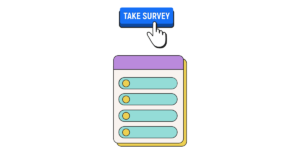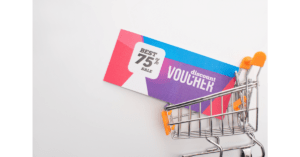Customer feedback surveys are a great way to gauge your customer base, to understand what they think of your brand, how to position your product in the market and take note of unhappy customers. A survey result is as good as the survey designed- a well created feedback form will solicit greater response rate and not just that, genuine response as well. You would not want to put your respondent through a feedback fatigue or questions that demand very heavy cognitive load. After all, you need their honest insights, all for the sake of bringing the best product and service for them. In this blog, we will touch on how to design a survey that makes people want to genuinely respond. We will take you through the types of questions in different customer feedback forms.
The Definition of Survey Responses
Survey responses are the backbone of any research study. It is essential to align your survey goals with the research objectives to get meaningful results. Survey designers, therefore, need to ensure that they create clear and concise questions that do not leave room for ambiguity or confusion. The quality of survey responses can be impacted by factors such as question wording, question order, and response options, including medium of feedback distribution.
Why do survey responses matter?
Accurate and meaningful data is essential for making informed decisions, and customer feedback collection systems are an effective way to gather such data. However, the accuracy of survey responses can be influenced by multiple factors such as question wording, response options, and respondent demographics.
Factors that affect quality of insights
Here are some key factors that can influence your data and data analysis:
Question clarity:
An ideal questionnaire should be free from jargon, technical terms and abbreviations that respondents will not understand. Keep it simple and easy to understand across demographics. Poorly worded or ambiguous questions can lead to confusion and inconsistent answers from respondents

Question order:
The order of question can influence the response rate and how genuine the response will be. One can place cognitive heavy questions in the middle and not right off the bat when starting a survey. Priming effects can occur when earlier questions influence responses to subsequent questions. Care should be taken to arrange questions in a logical and unbiased manner to avoid order bias.
Response options:
Providing limited or biased response options may lead to respondents selecting answers that do not accurately represent their true opinions or experiences. One can include open ended responses, or “prefer not to answer”, or “order” can capture diverse responses.
Survey length:
Long questionnaires will bring respondent fatigue and so people can rush to complete them. This can also bring a high drop out rate or poor response rate. Keeping it concise and focused on essential information can help maintain respondent engagement and improve response quality.
Social desirability bias:
Respondents may feel pressured to provide socially desirable responses, aligning with societal norms or the perceived expectations of the survey. This bias can lead to inaccurate or exaggerated answers. Anonymous or confidential surveys can help mitigate this bias and encourage honest responses.
Sampling bias:
The process of selecting survey participants can introduce sampling bias. In this issue, the sample does not accurately represent the target population. This can lead to biased or unrepresentative responses. To minimize this bias, opt for a random and diverse sampling technique.

Survey distribution channels:
How we share the survey can greatly affect response rate. If we choose browser based methods or traditional online surveys, one can have a low response rate since these mediums are slower and inefficient. Opting for a faster medium such as messenger based surveys, interactive AMP email forms can bring faster and in-moment response collection.
Respondent characteristics:
When creating a questionnaire for a larger population, keep in mind their knowledge, experiences, attitudes, and cultural backgrounds. These factors can affect the way they understand and answer the feedback forms. If you want to curate questionnaires for a certain number of respondents, keep in mind the multilingual nature of format, the complexity and mediums they use to share their insights.
Types of Surveys
Marketers can use quantitative research methods or seek qualitative data as well or a mix of both depending on their end goal. Here are the types of research methods for each segments:
Qualitative methods:
Face to face interviews: This involves one on one conversation between the interviewer and participant. They provide an opportunity for participants to share detailed information about their experiences, thoughts, and feelings.
Ethnographic methods: Ethnographic surveys involve the researcher putting themselves in the participants’ natural environment to observe and engage in their daily activities. This approach provides a deep understanding of the participants’ context and culture.
Online feedback methods: Online surveys are conducted via emails, messenger based app, chat bot surveys, and in-app forms. These forms include open ended questions that allow participants to express their opinions freely. This is also a convenient way to bring a higher number of responses and offers a wide reach to collect qualitative data.
Diary studies: Diary studies involve participants keeping a journal or diary to record their experiences, thoughts, and activities over a period of time. This method captures real-time data and provides insights into participants’ day-to-day lives. Digitization of diary studies can bring more vivid and real time feedback for deeper insight collection.
Case studies: Case studies involve in-depth examination of a particular individual, group, organization, or situation. Researchers use various data sources- interviews, observations, and document analysis- to understand and analyze the case.
Focus groups: Focus groups include a small group of participants (typically 6-10) who engage in a guided discussion led by a moderator. This format allows for interaction and the exploration of different perspectives and group dynamics.

Quantitative methods:
Longitudinal study: In this method, data is collected from a single respondent over a very long period in time. This can span weeks, months or years. This allows researchers to observe changes and trends in attitudes or behaviors over an extended period.
Customer satisfaction survey: CSAT, as it is commonly called, will assess customers’ satisfaction with a product, service, or overall experience. They often employ rating scale or likert scale type of question to measure satisfaction levels
Employee survey: This method will collect data from employees within an organization. They may explore job satisfaction, engagement, work environment, or other aspects relevant to the workforce.
Descriptive surveys: Descriptive surveys aim to describe the characteristics or opinions of a population. They often use close-ended questions with response options, allowing for quantitative analysis and summarization of data.
Net promoter score: Net promoter score or the NPS offers a scale that seeks to know how likely a customer is to recommend a product or service. This scale is mapped from 0 to 10. NPS provides both quantitative data (score) and qualitative (open-ended question reason) feedback.
How to Design Effective Surveys That Get Results?
An effective survey is the one that brings data to the dashboard. Here are some best practices that will increase survey response rate, bring solid survey results and give you data that will help you make business decisions:
Define clear objectives
Before designing a questionnaire, one should define what goal the feedback form will achieve. This will curb down junk and help you focus on the question you need to ask. Specific questions and a goal oriented survey will make it easy to bring precise responses from your target audience.
Avoid lengthy questions
Causing respondent fatigue can botch up response rate and bring skewed responses. People would be in a hurry to finish it and thereby, provide inaccurate data. There can also be drop out rate in the middle of the form. Keep it short, to the point, and prioritize essential questions and eliminate any redundancy.
Use a mix of questions
Utilize a variety of question types to capture different types of information. Include multiple choice questions, rating scales, open-ended questions, and matrix questions. This provides a balance between quantitative data and qualitative insights.
Start with easy and engaging questions
Begin your survey with simple and engaging questions to capture participants’ interest and encourage them to continue. This helps establish momentum and reduces the risk of survey abandonment. If you need to probe on cognitive heavy questions, you can divide it into comprehensible parts or put them in the middle of the survey.
Keep jargon-free language
Avoid jargon, technical terms, or acronyms that participants may not be familiar with. Keep the language simple, concise, and straightforward. Your participants should not have any room to misinterpret questions.
Ensure logical flow
Organize your questions in a logical sequence that flows smoothly. Start with broad and general questions, gradually progressing to more specific topics. This helps respondents maintain focus and prevents them from feeling overwhelmed.
Avoid leading or biased questions
Construct questions that are neutral and unbiased. Avoid phrasing questions in a way that leads participants to a particular answer. Aim for objectivity to obtain accurate and unbiased responses. Example “How bad is the current state of service in the group?”. This automatically brings a negative connotation to the respondent’s mind. Instead, one can ask “describe the current state of service in the group.”
Allow for skip logic and branching
Skip logic is a feature where the upcoming question changes based on what the respondent has previously answered. This prevents repetitive nature of responses and collects relevant data sooner.

Offer incentives
Survey incentives include discount coupons, freebies, extension of a service on completion of a feedback form, or a cashback opportunity. Incentives and rewards should be applied when appropriate. This can increase participation rates and will encourage respondents to share authentic feedback.
Ask direction questions
Direct questions are an ideal way to seek responses without any ambiguity. When you want specific feedback or want responses on the customer’s details (name, age, location, income level, education level). This also spans for certain situations like a predefined questionnaire, specific feedback on a certain experience or a product feature, or on a close-ended question.
Avoid response bias
Certain survey questions might require sensitive information from the respondent. This can include about their social habits, personal behaviours or while using an intimate product. To avoid response bias, offer anonymity and assure people that the responses are going to be confidential. This will dispose them to answer openly and eliminate potential bias.
Survey Results also Depend on the Feedback Mediums
Real time mediums of messenger apps such as Whatsapp and Meta messenger are a great way to seek feedback from customers right where they are. People spend a lot of time on social media since it elicits certain emotions and reactions within them. These are real time mediums that offer instant communication with their peers. While curating a survey template, one must keep in mind that messenger platforms are used on a daily basis. Offering interactive platforms to collect information can make for a potential tool to bring high response rate. Marketers should also keep in mind that dynamic mediums of AMP emails and chatbot surveys, in app surveys can bring instantaneous survey responses from users.
Conclusion
Designing surveys that get results requires a deep understanding of survey responses. Factors like question wording and length, survey format and medium of distribution play a critical role in shaping an effective survey design. To design effective surveys that yield useful insights, you need to identify your survey goals, choose the right questions, and take advantage of incentives to boost response rates. You also need to be mindful of response biases and the impact of emotions and timing on survey responses.
If you are looking to bring faster survey responses and want to create instant feedback form, try our AI Survey Builder. Upgrade your customer experience with Merren.

